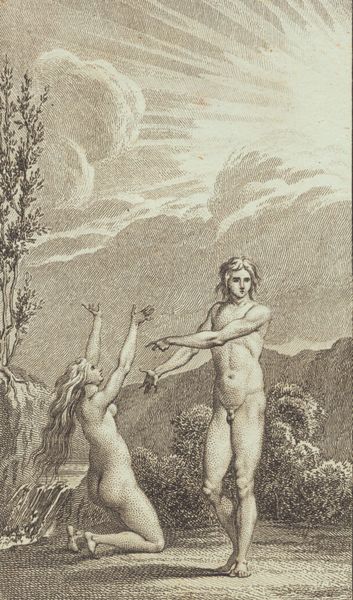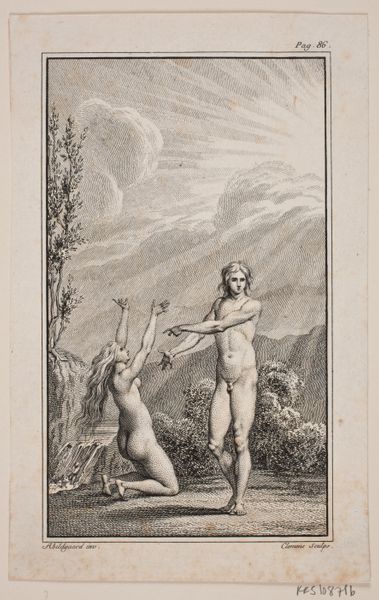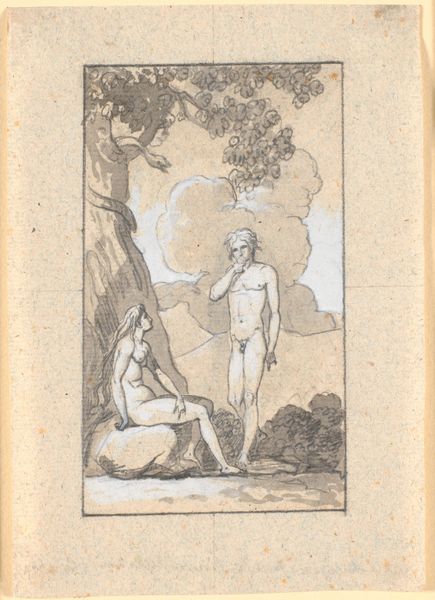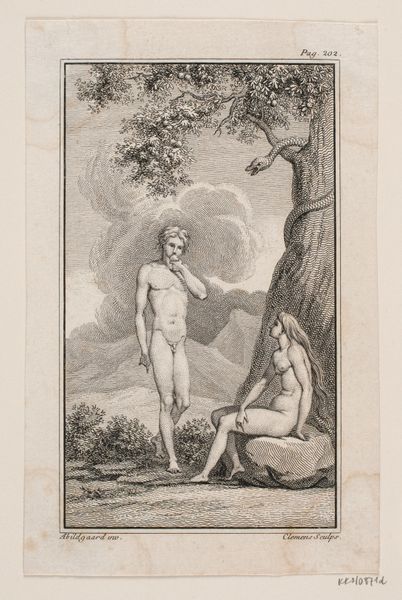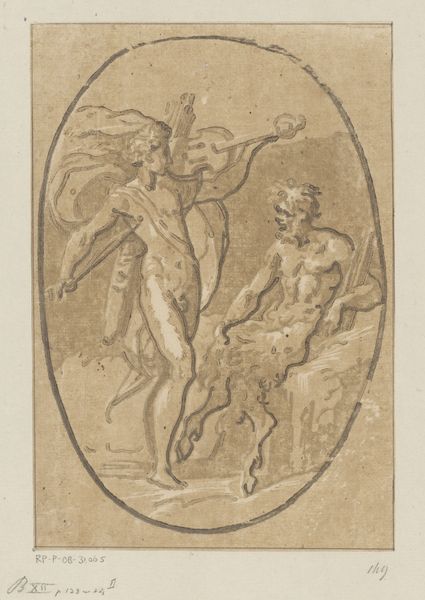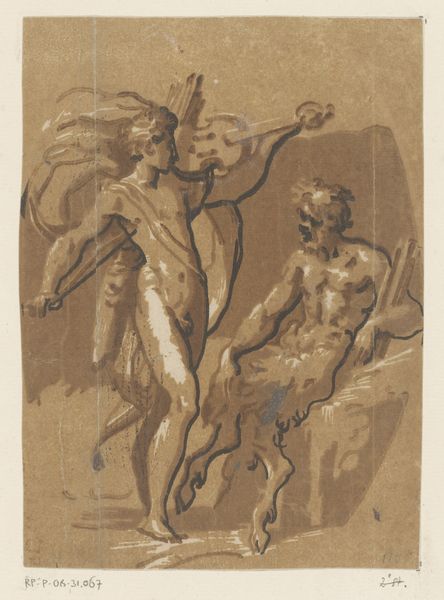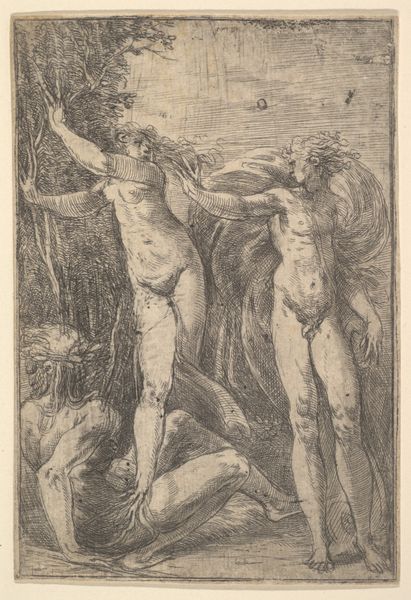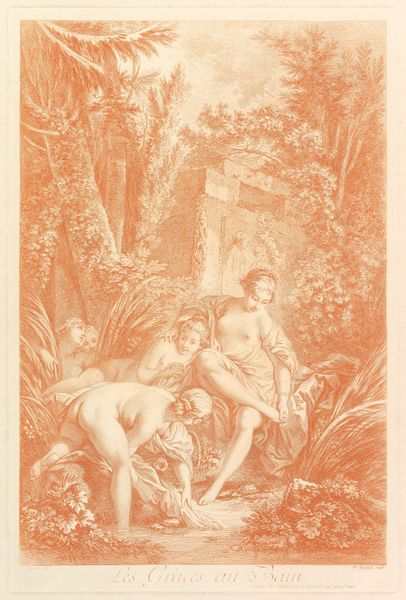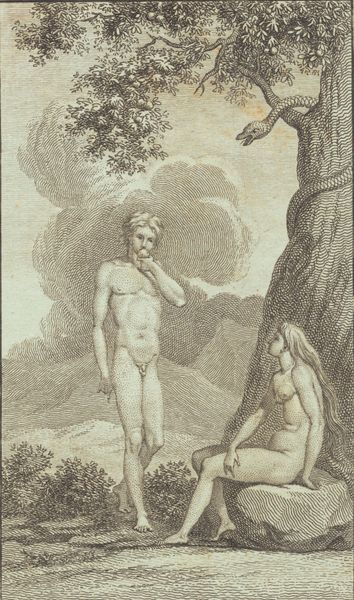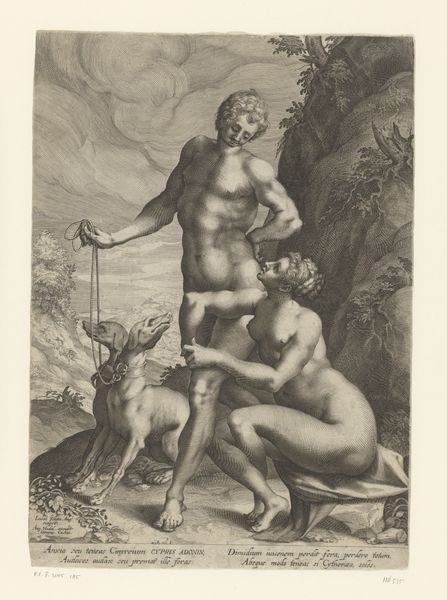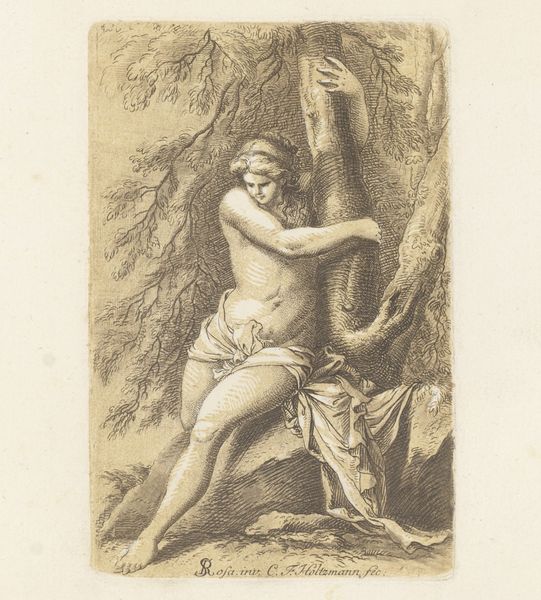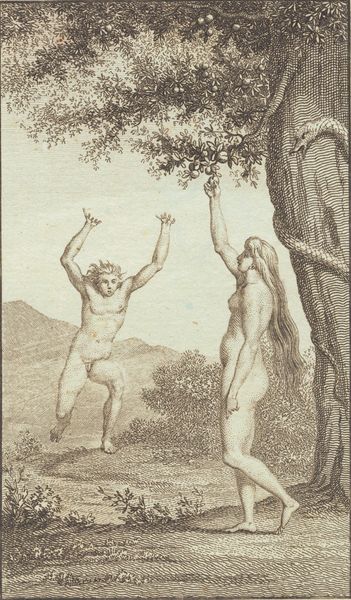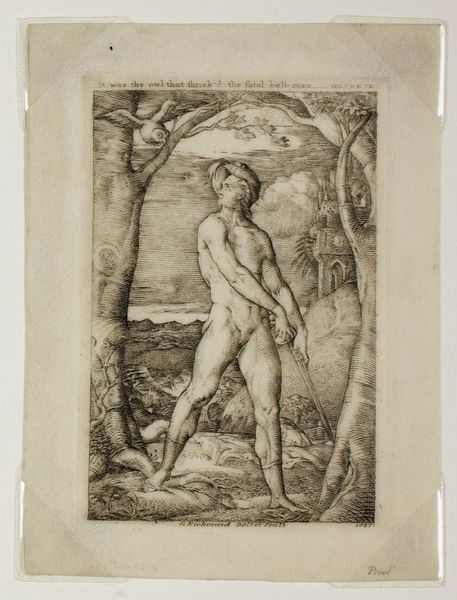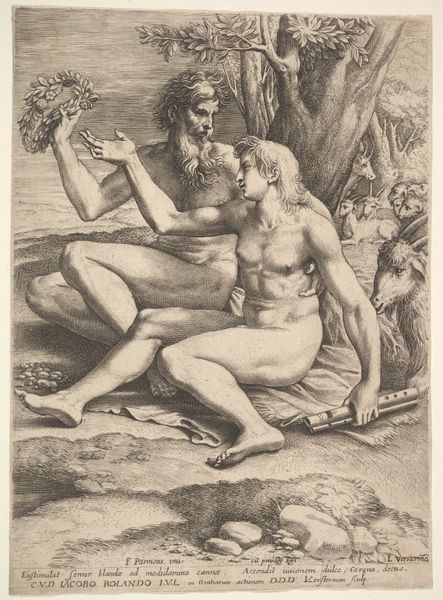
Dimensions: 131 mm (height) x 78 mm (width) (bladmaal)
Curator: We’re standing before Nicolai Abildgaard’s “Den nyskabte Eva,” or “The Newly Created Eve,” made around 1777 to 1780. It’s rendered in pencil, watercolor, and coloured pencil, all on paper. Editor: Immediately, I'm struck by the seeming roughness of it. It looks less like a finished artwork and more like a preparatory sketch. I'm interested in what was on his mind, materially, while composing this. Curator: Given its origins in Romanticism, consider the emotional weight being carried here, through visual symbolism and the continuity of the Edenic myth! Eve's upward reach suggests an immediate spiritual yearning, that moment of becoming. And notice the light illuminating her form… she's almost literally touched by grace, you see it in the Romantic striving after sublime emotional experience. Editor: Right, and looking at the work’s materiality complicates this notion of spiritual yearning, though. See how the strokes of pencil and watercolour create a body, yes, but one firmly rooted in its making. The lines are not particularly polished or hidden – the "grace" feels like a construction from these very earthly materials. There's an intentional lack of finish that reveals the artist's hand, drawing our attention to labor. Curator: It is also a figuration, so of course there is an artifice in its making, we see a familiar, re-worked narrative being told, where symbolic resonance carries cultural weight. Abildgaard engages directly with that long lineage of Eve imagery and history. This is about Paradise Lost being rendered and imagined for an emerging Denmark. Editor: That's exactly it. He's handling pencil and watercolor, available materials, making marks that perform the familiar story you described. The materiality asks us to consider art as both product and production, and reflect upon the labor to reinforce it, maybe to create and sell national mythologies, like "Danish Romanticism." Curator: And beyond simple 'production', what is produced, Editor, is the very *idea* of Danish Romanticism – a distinct emotional and intellectual landscape painted onto the broader canvas of European thought. Editor: That emphasis also reflects Romanticism; a material approach lets us grasp its creation. Seeing the watercolor bleed and the pencil lines scratch brings us closer to understanding not just the divine narrative but also the terrestrial work required to construct it. Curator: Quite so. The creation is never without its material roots. Thank you, Editor! Editor: Thanks, Curator. Always good to delve deeper than what’s on the surface.
Comments
No comments
Be the first to comment and join the conversation on the ultimate creative platform.
